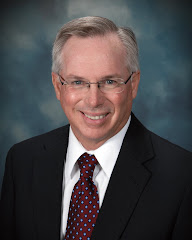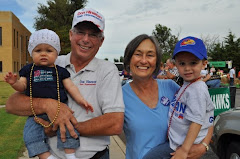News for the 118th District
By Representative Don Hineman
January 26, 2009 Volume 1, Number 2
By Representative Don Hineman
January 26, 2009 Volume 1, Number 2
Progress toward a Budget?
The week of January 19-23 was marked by intense meetings by Senate Ways and Means and House Appropriations Committees, as both groups searched for the best way to craft a revised budget for Fiscal Year 2009. These official meetings were only the tip of the iceberg, however, as nearly every conversation in and around the Capitol touched on the budget, whether it was party caucuses, informal conversations among legislators, communications with constituents, or input from stakeholders. Stay tuned…
The week of January 19-23 was marked by intense meetings by Senate Ways and Means and House Appropriations Committees, as both groups searched for the best way to craft a revised budget for Fiscal Year 2009. These official meetings were only the tip of the iceberg, however, as nearly every conversation in and around the Capitol touched on the budget, whether it was party caucuses, informal conversations among legislators, communications with constituents, or input from stakeholders. Stay tuned…
We Get What We Pay For… and Maybe More
Kansas public schools got an infusion of $1.5 billion in additional funding over the past three years, and a report recently released by the Legislative Division of Post Audit reveals that seventy percent of that funding was spent on instruction. “In general”, said Sen. Derek Schmidt, an Independence Republican, “the audit suggests the money is going where it was intended.” An earlier Post Audit report found “a strong association between the amounts districts spend and the outcomes they achieve”. What’s more, Director Alexa Posny, head of the Kansas Department of Education told the House Education Committee that student achievement has risen dramatically in recent years, even though Kansas teacher salaries rank 38th in the U.S.
Building Boom at Fort Riley
As a member of the House Committee on Veterans, Military, and Homeland Security I was recently privileged to take part in a legislator’s tour of Ft. Riley. This historic fort, first established in 1853, has been home to the First Infantry Division, better known as the Big Red One, since 1917. The Big Red One has had a long and distinguished combat history, playing key roles in World War I, World War II, the Vietnam War, Operation Desert Storm, and most recently in Operation Iraqi Freedom. All six of the Big Red One’s brigades, the First, Second, Third, and Fourth Brigade Combat Teams, the 1st Combat Aviation Brigade, and the 1st Sustainment Brigade, have all deployed to Iraq at various times from 2003 until the present. The 3rd Brigade is currently deployed to Afghanistan and the 2nd Brigade is serving in Iraq. At the present time there are 16,000 soldiers assigned to Ft. Riley, and the fort is currently home to approximately 8,000 soldiers and their family members. This number is expected to soon grow to 18,500, and an ambitious building program is underway at the fort to accommodate these personnel. Now under construction or recently completed are a new headquarters facility, a new airfield and support installation, a new $400 million hospital, and over $500 million in new soldier housing. By 2015 the U.S. government will have spent over $3.2 billion on new facilities at the fort. The expansion of activities at the fort has a major impact on the local economy and the economy of the state. In fiscal year 2007 total payroll at the fort was over $1 billion, and total economic impact to the region was $1.433 billion.
What’s Vision 2020?
One of the committees I serve on is titled Vision 2020, and it is a new committee this year. Its purpose is to examine issues that have a longer time horizon than legislative committees typically concern themselves with, and to make recommendations and possibly propose legislation regarding these issues. The issue we have focused on recently is the silting-in of Kansas reservoirs and the problems this causes. Most of the reservoirs in Kansas were constructed in the 1950’s or 1960’s and nearly of all of them were designed for a 100-year life. In other words, since a reservoir is an artificial structure, it was known and expected that these structures would fill with silt over time. We are now approaching the 50-year “half-life” of these reservoirs, and the bad news is that many of the reservoirs, especially those in the eastern half of the state, are silting in at a faster rate than originally calculated. Solutions are difficult and expensive, but the alternative of building new reservoirs is even more prohibitive. Current estimates are that construction of new reservoirs equivalent to our largest state reservoirs today would cost $1.5 billion each.
District 118 Factoid: Our district is the most rural of all 125 house districts in Kansas. It contains 7 ½ counties, 8% of the land area of the state, and is home to fourteen school districts.
Old Farmer’s Advice: Words that soak into your ears are whispered...not yelled.
Quote of the Week: Experience is a hard teacher because she gives the test first, the lesson afterwards. – Vernon Sanders Law





No comments:
Post a Comment